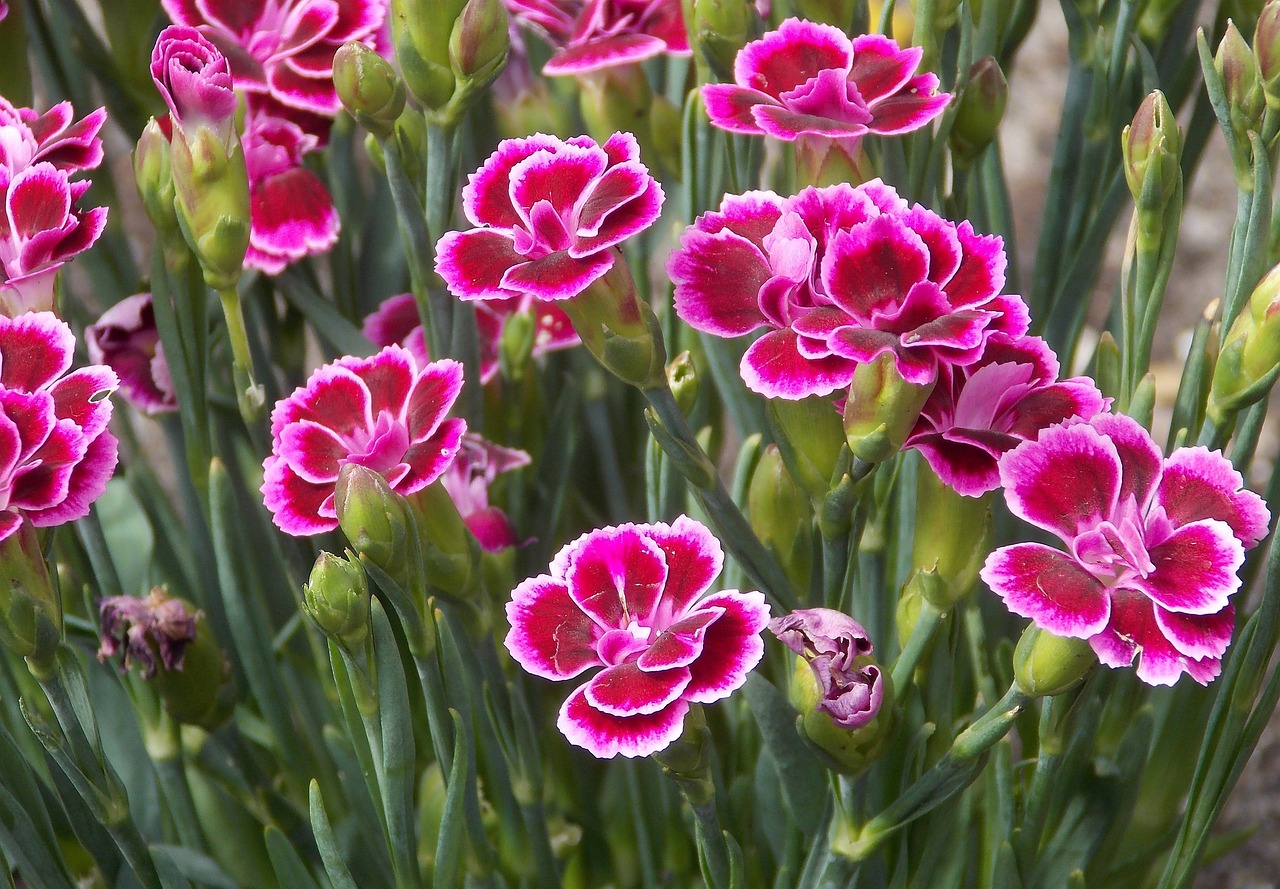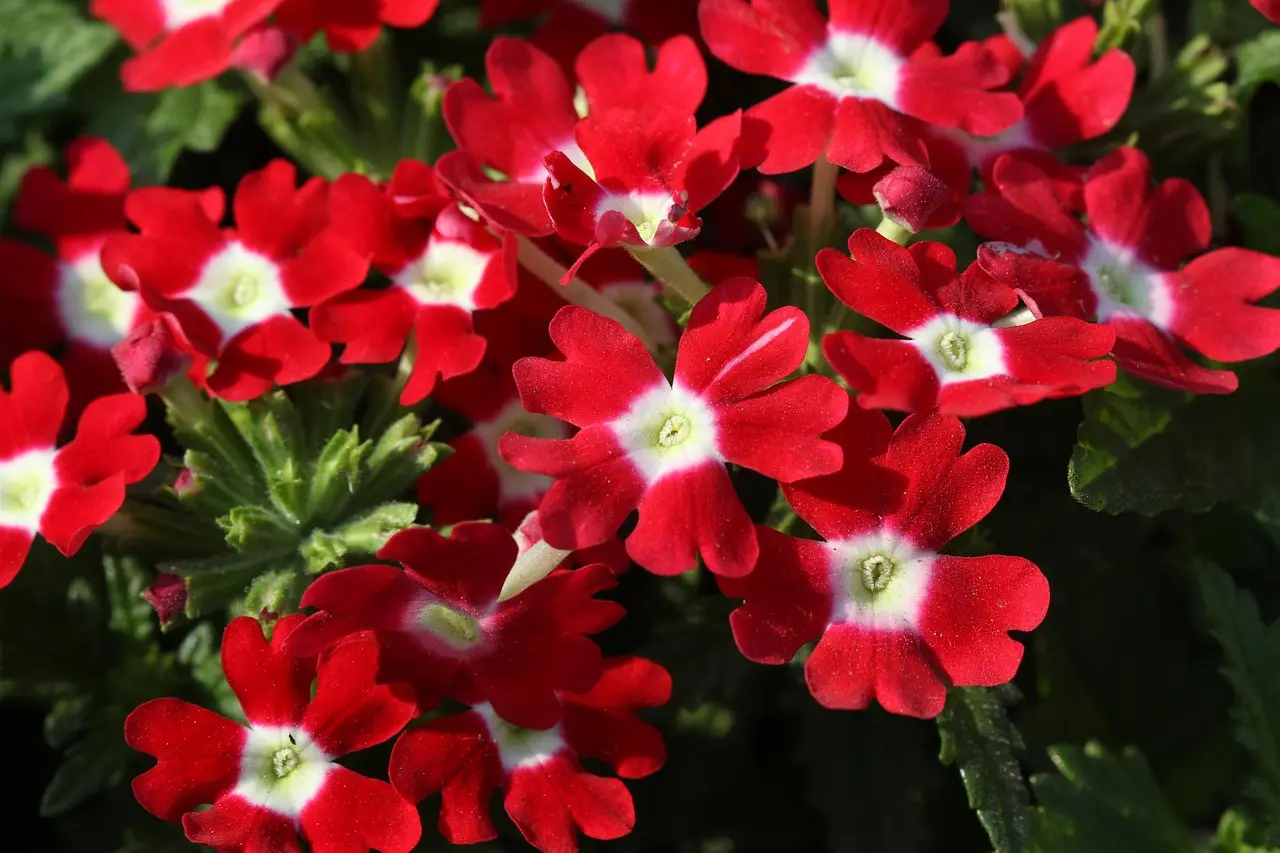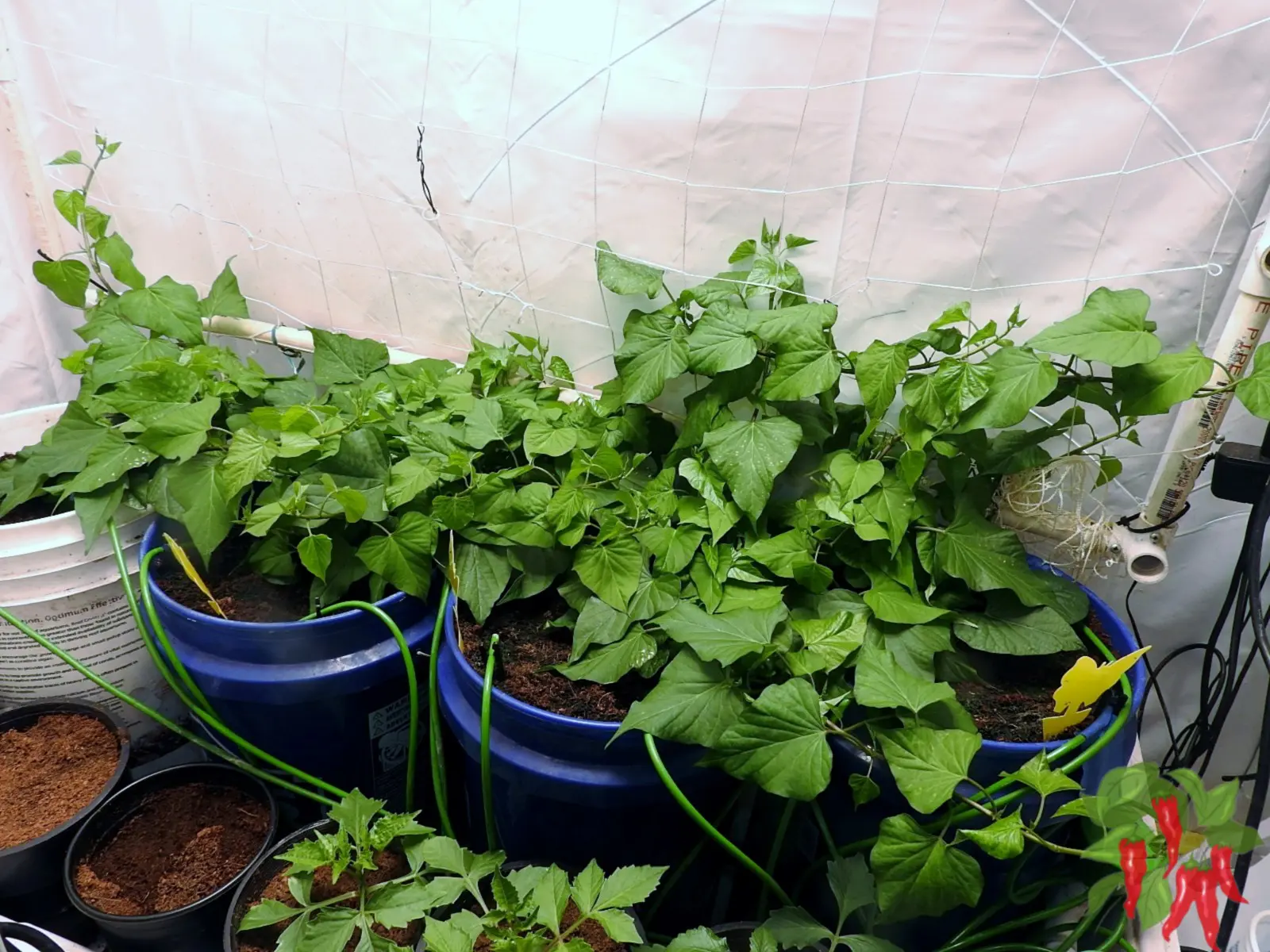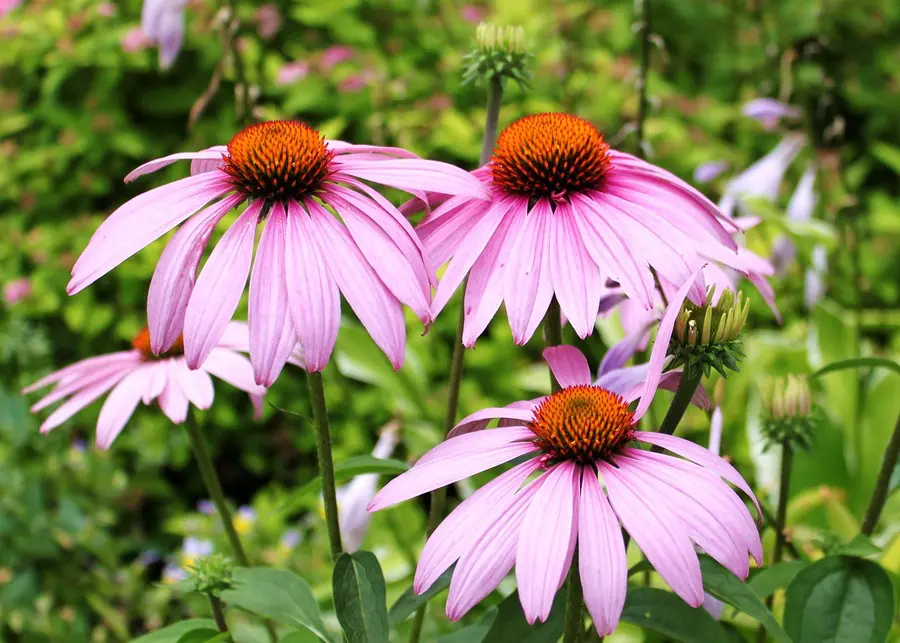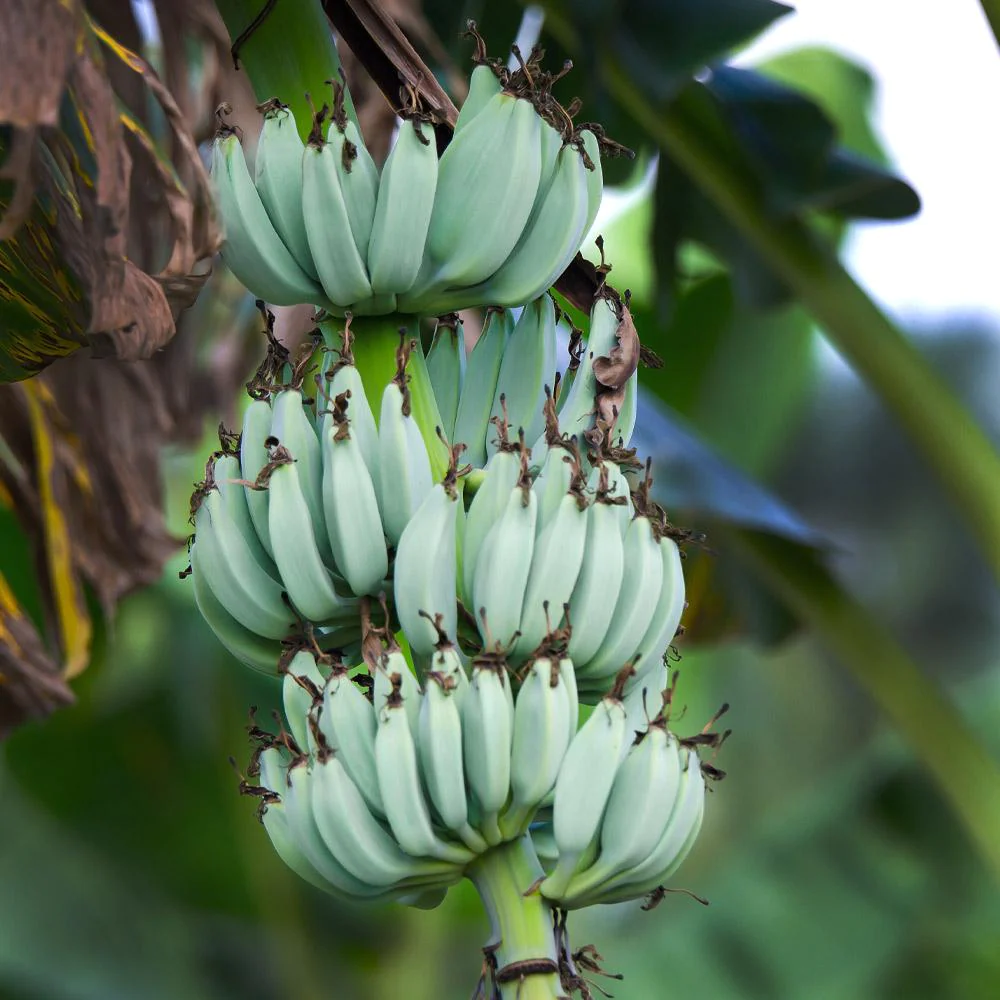This post contains affiliate links. If you buy something from one of our links we may earn a commission. Thanks
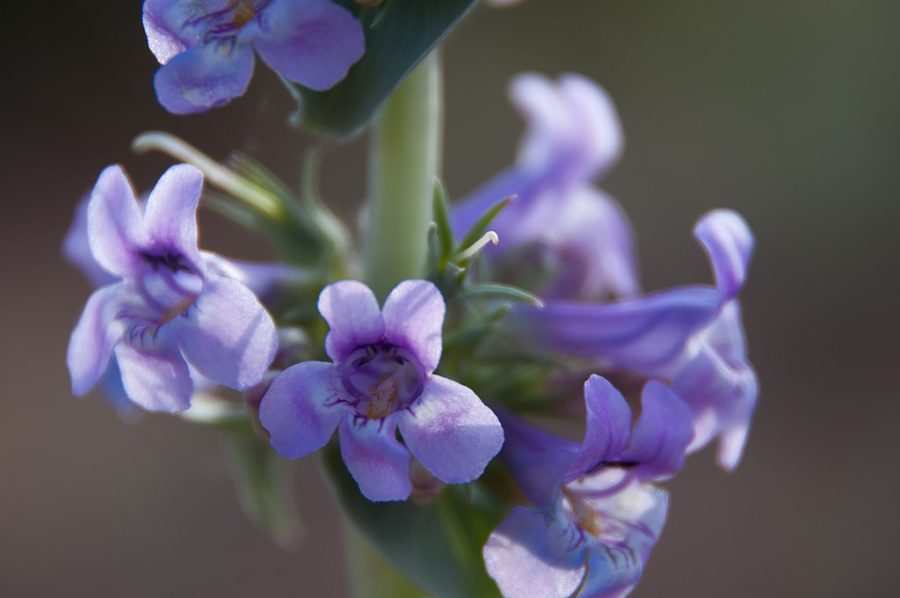
Discover the joy of growing Penstemon in pots! Dive into our guide to learn how these vibrant perennials can liven up your patio or balcony with ease.
Growing Penstemon in pots requires well-draining soil and a location that receives at least 6 hours of sunlight daily. Choose a pot with drainage holes and water when the soil surface feels dry to the touch. During the growing season, fertilize with a balanced, water-soluble fertilizer once a month. Protect from extreme cold in winter.
Welcome to the vibrant world of Penstemon, a perennial delight that can make your patio or balcony come alive with a riot of color.
If you’ve ever wondered about growing Penstemon in pots, you’re in for a treat!
This robust, versatile plant, with its stunning spires of flowers, is not only easy to cultivate in containers but also incredibly rewarding.
These hardy easy-to-care-for native plants are often overlooked and it blooms from spring to fall.
So, why not embark on this green-thumbed journey with us and discover how to grow Penstemon in pots? Let’s dive in!
Growing Penstemon In Pots
Of course, you’re here because you have a question on your mind – Can you grow Penstemon in pots?
The answer is a resounding yes! Container gardening is a fantastic option for these beautiful plants, especially if you’re short on space or want to adorn your patio, balcony, or even windowsills with a splash of color.
Growing Penstemon in pots not only offers flexibility in terms of where you can place your plants but also allows you to control the environment better than if they were in the ground.
Ready to take your gardening game to the next level? Let’s start our Penstemon journey together and learn how to care for Penstemon plants.
What Is Penstemon?
A dive into the world of Penstemon reveals a captivating genus of flowering plants predominantly native to North America.
With over 250 species under its umbrella, Penstemon, also known as Beardtongues, has earned quite a reputation for its uniquely shaped, tubular flowers.
These vibrant blooms make Penstemon a prime choice among gardening enthusiasts and a favorite destination for hummingbirds and butterflies alike.
Is Penstemon a Perennial?
Wondering about the lifecycle of Penstemon? It brings joy to our hearts to let you know that Penstemon is, indeed, a perennial plant.
This means that your garden can enjoy the beauty and charm of these blooms year after year, as they re-emerge each spring to delight the senses.
Does Penstemon Spread?
The growth habit of Penstemon may be another question in your gardening exploration.
Well, certain varieties of Penstemon do tend to spread via self-seeding, which can create an increasingly beautiful display over time.
However, they are not considered invasive and typically maintain a manageable growth pattern.
Is Penstemon Poisonous?
When choosing plants for our gardens, it’s important to consider their safety, especially if children or pets share our space.
Luckily, Penstemon is not known to be poisonous to humans or pets.
As with any plant, however, it’s recommended to discourage consumption and to monitor those with sensitive skin, as individual reactions may vary.
Penstemon Zone
One of the brilliant aspects of Penstemon is its adaptability to a range of growing zones.
Depending on the specific species, Penstemon can thrive in USDA hardiness zones from 4 through 9.
This makes them a versatile choice for gardens across a wide geographical range.
Penstemon Plant Size
Size matters when it comes to planning your garden, and Penstemon certainly offers variety.
On average, these plants can grow anywhere from 1 to 3 feet in width and 1 to 5 feet in height.
The size of your Penstemon will largely depend on the specific variety you choose.
How Tall Do Penstemon Grow?
So, how high can these lovely plants reach? While the height can vary significantly between species, most Penstemon plants can grow to heights of anywhere between 1 to 5 feet.
Certain species, such as the Rocky Mountain Penstemon, can even reach up to 6 feet under optimal conditions!
Dwarf Penstemon
For those with limited space or who prefer smaller plants, dwarf Penstemon varieties are a perfect choice.
These charmingly petite plants typically reach heights of around 1 foot and offer all the beauty and allure of their taller counterparts.
Types of Penstemon
The diversity of Penstemon species is truly awe-inspiring.
Some popular types include the Penstemon barbatus with its long, tubular flowers, the Penstemon digitalis known for its adaptability and resilience, and the Penstemon hirsutus, valued for its compact growth habit and ability to thrive in a rocky soil type.
With a palette of colors ranging from whites, pinks, and purples, to vibrant reds and blues, there is a Penstemon for every garden aesthetic.
Let’s start with the basics – what is Penstemon? It’s a gorgeous genus of flowering plants, native to North America, with over 250 species to its name.
You might know them by their other names like beardtongues, which is a nod to their intriguing tubular flowers, perfect for attracting hummingbirds and butterflies.
How to grow Penstemon
Alright, so now that we’ve acquainted ourselves with the nature and diversity of Penstemon, how about we explore the art and science of growing these lovely plants?
Whether you’re a seasoned gardener or just starting your green-thumb journey, nurturing Penstemon can be a rewarding experience.
Let’s delve into the process of growing Penstemon and unravel the key aspects like sunlight requirements, watering regime, and soil preferences.
From container cultivation to the perfect fertilizer, we’ve got you covered.
So, strap in for an enlightening gardening journey, and let’s help those Penstemons flourish!
Penstemon Sun or Shade?
Penstemon, often known as beardtongue plants, thrive in full sun to partial shade.
They can adapt to a variety of light conditions, but they perform their best in spots that receive at least six hours of sunlight daily.
In hotter climates, some afternoon light shade can prevent the plant from wilting or scorching.
Penstemon Water Needs
When it comes to watering, Penstemon is quite drought-tolerant once established.
However, during the initial growth phase, it requires consistent watering.
The soil should be kept moderately moist, but it’s essential to avoid waterlogging as this can lead to root rot.
Penstemon Soil Requirements (Coco Coir and Perlite)
Penstemon prefers well-draining soil, and an effective combination can be achieved with coco coir and perlite.
Coco coir helps in retaining adequate moisture while perlite ensures excellent drainage.
This mix provides the right balance of moisture retention and drainage, creating an optimal growing environment for Penstemon.
Penstemon in Containers
Growing Penstemon in containers is entirely feasible and offers some advantages.
It allows for better control of soil conditions and moisture levels. Plus, you can move the pot around to ensure the plant gets optimal sunlight.
Use a container with sufficient drainage holes, and make sure it’s large enough to accommodate your Penstemon’s growth.
Penstemon Fertilizer
Although Penstemon isn’t particularly demanding when it comes to nutrition, an occasional dose of a balanced, slow-release fertilizer can promote healthier growth and more abundant flowering.
Apply in early spring to give the plant a nutritional boost for the growing season.
Penstemon Hardiness Zone
Penstemon species are hardy and can thrive in USDA hardiness zones 4 through 9, depending on the specific variety.
This means they can tolerate a wide range of climates, from relatively cold temperatures of northern climates to warmer southern regions.
Penstemon Seeding
Seeding Penstemon can be a rewarding way to propagate these lovely flowers.
Start the seeds indoors 6-8 weeks before the last expected frost date. Plant the seeds just below the surface of a seed-starting mix, keep them warm, and maintain consistent moisture levels.
Penstemon Care
Caring for your Penstemon plants can be a delightful experience, and with just a few tips and tricks up your sleeve, you’ll have a thriving, blooming display in no time.
Let’s delve into everything from pruning and repotting to winter care and handling drought conditions.
Trust me, whether you’re a seasoned gardener or a newbie, the joy of watching your Penstemon flourish is second to none!
So, are you ready to explore the nurturing side of your green thumb journey? Let’s get started!
Pruning Penstemon: Grooming Your Green Friends
Pruning is an essential aspect of Penstemon care that helps maintain its overall health and encourages more vibrant blooms.
It’s best to prune Penstemon in late winter or early spring before new growth begins.
You’ll want to remove dead, damaged, or diseased stems down to the base of the plant.
Additionally, you can cut back the whole plant by about a third to maintain a compact shape and stimulate new growth.
Now, when it comes to preparing your Penstemon for winter, pruning has a slightly different approach.
You should leave the flower stalks and foliage intact during winter to protect the crown of the plant and the young shoots that might appear at the base.
Once the danger of frost is over, you can trim back the old stalks to make way for new spring growth.
Repotting: Refreshing the Roots
Penstemon, when grown in pots, can benefit from periodic repotting. It’s typically done every 2-3 years or when you notice that the plant becomes root-bound (when roots start to take up the whole pot).
Repotting your Penstemon plants is necessary when they outgrow their current containers or when you want to refresh the potting mix.
Here’s a step-by-step guide on how to repot your Penstemon:
Choose the right time: The ideal time to repot Penstemon is in early spring, just before the active growth period begins. This allows the plant to recover quickly and establish in its new pot.
Select a new pot: Choose a new pot that is slightly larger than the current one. Ensure it has drainage holes to prevent waterlogging. Use a pot with good quality potting mix or a well-draining soil blend suitable for container gardening.
Prepare the plant: Water your Penstemon a day or two before repotting to ensure the roots are hydrated. This will make it easier to remove the plant from its current pot without causing excessive root damage.
Remove the plant from the pot: Gently tap or squeeze the sides of the pot to loosen the root ball. Carefully slide the Penstemon out of the pot, supporting the base of the plant to prevent any breakage.
Inspect and trim the roots: Examine the root ball for any signs of disease, rot, or overcrowding. If necessary, gently trim any damaged or overly long roots with clean, sharp pruners or scissors.
Add fresh potting mix: Place a layer of fresh potting mix at the bottom of the new pot. Make sure the potting mix is well-draining and provides good aeration for the roots. Create a small mound in the center to support the plant.
Repot the Penstemon: Position the Penstemon in the center of the new pot, ensuring the top of the root ball sits slightly below the rim. Fill in the gaps around the roots with additional potting mix, gently firming it in place.
Water and settle the soil: Water the plant thoroughly after repotting, allowing the water to penetrate the entire root ball. This helps settle the soil and ensures good contact between the roots and the new potting mix.
Provide post-repot care: Place the repotted Penstemon in a suitable location with appropriate sunlight and temperature conditions. Keep the soil evenly moist for the first few weeks, and avoid overwatering to prevent root rot.
By following these steps, you can successfully repot your Penstemon, providing it with fresh soil and ample room for growth.
Remember to monitor the plant closely after repotting and adjust care accordingly to help it thrive in its new container.
Winter Care for Penstemon: Cold Weather Companionship
While Penstemon is a hardy plant, it appreciates a little extra care during winter.
As mentioned earlier, avoid pruning your Penstemon during the winter months.
Instead, you can mulch around the base of the plant with straw or similar material to insulate the roots from extreme cold.
If your Penstemon is potted, consider moving it to a sheltered location, like a patio or against a house wall, to protect it from harsh winter winds and severe frost.
Managing Penstemon during Droughts: Thirst Quenching Strategies
One of the strengths of Penstemon is its drought tolerance, making it a perfect fit for rock gardens, xeriscaping, or low-water gardens.
However, prolonged periods of extreme drought can stress even the hardiest plants.
While your Penstemon won’t need much watering once established, during a drought, you may need to water it deeply once a week to help it through.
Remember, it’s better to water thoroughly and less frequently to encourage deep root growth, which helps the plant withstand dry conditions better.
Propagating Penstemon
Have you ever been so taken by the beauty of your Penstemon that you wish you could create more of these delightful plants to spread around your garden or share with your fellow gardening friends?
Well, you’re in luck because propagating Penstemon is a rewarding gardening endeavor that’s not as challenging as you might think.
This section will walk you through the various propagation methods such as stem cuttings, division, and growing from seed for your new plant.
We’ll also cover transplanting and dealing with potential pests and diseases.
So, if you’re keen on seeing more of these vibrant beauties around, let’s delve into the enchanting world of propagating Penstemons.
The Magic of Penstemon Stem Cuttings
Embarking on the journey of propagating your Penstemon from stem cuttings can be a truly fulfilling experience. Early summer is the ideal time to take cuttings.
Propagating your Penstemon from stem cuttings can be a rewarding way to expand your plant collection.
Here is a step-by-step guide on how to successfully propagate Penstemon using stem cuttings:
Select a healthy stem: Choose a non-flowering stem that is about 4-6 inches long. Look for a stem that is firm and has no signs of damage or disease.
Prepare the cutting: Using clean and sharp pruning shears, make a clean cut just below a leaf node (the area where leaves emerge). Remove any leaves from the lower half of the cutting to reduce moisture loss.
Apply rooting hormone (optional): Although not necessary, dipping the cut end of the stems into a rooting hormone powder or gel can help promote root development.
Plant the cutting: Fill a small pot with a well-draining potting mix or a mix of perlite and coco coir or peat moss. Make a hole in the soil using a pencil or your finger, then insert the cutting into the hole, ensuring that at least two nodes are buried in the soil.
Provide optimal conditions: Place the pot in a warm location with bright, indirect light. Maintain a consistent level of moisture in the soil by lightly misting it or using a humidity dome to create a mini greenhouse effect.
Monitor and care for the cutting: Keep a close eye on the cutting to ensure it remains moist but not waterlogged. Avoid direct sunlight and extreme temperature fluctuations. Mist the leaves occasionally to maintain humidity and prevent drying out.
Root development: After a few weeks, gently tug on the cutting to check for resistance. If you feel resistance, it indicates that roots have developed on the young plants. If not, give them more time. Once rooted, you can transplant the cutting into a larger pot or directly into the garden.
Remember, not all cuttings may successfully root, so it’s a good idea to take several cuttings to increase your chances of success.
With a little patience and care, you can enjoy watching your Penstemon cuttings grow into healthy new plants!
The Art of Dividing Penstemon
Dividing Penstemons is an excellent way to keep your plant healthy and propagate it further.
You would want to perform this in early spring or late autumn.
Dividing Penstemons is a great way to propagate and rejuvenate your plants. Here’s a step-by-step guide on how to divide Penstemons successfully:
Choose the right time: The best time to divide Penstemons is in early spring or early fall when the weather is cooler and the plants are not actively growing.
Prepare the plant: Water the Penstemon thoroughly a day before dividing to ensure the roots are hydrated. This will make it easier to separate the plant and minimize stress.
Dig up the plant: Carefully dig around the base of the Penstemon, creating a wide circle to expose the entire root system. Use a garden fork or shovel, taking care not to damage the roots.
Divide the root ball: Gently separate the root ball into smaller sections. You can use your hands or a sharp, clean knife to cut through the roots. Each divided section should have a healthy clump of roots and several shoots or stems.
Trim and inspect: Trim any damaged or overly long roots, as well as any dead or weak growth. Inspect the divided sections for signs of disease or pests, and remove any affected parts.
Replant the divisions: Choose a new planting site with well-draining soil and sufficient sunlight. Dig a hole for each divided section, ensuring it is wide and deep enough to accommodate the roots. Place the division into the hole, backfill with soil, and gently firm it in place.
Water and care: After planting, water the divisions thoroughly to settle the soil and provide moisture for root establishment. Keep the soil consistently moist but not waterlogged for the first few weeks. Mulching around the plants can help retain moisture and suppress weeds.
Monitor and maintain: Regularly monitor the divided Penstemons for signs of stress, such as wilting or yellowing leaves. Provide adequate water, especially during dry spells, and protect them from extreme temperatures or harsh conditions.
Dividing Penstemons can help rejuvenate the plants and promote healthier growth.
By following these steps and providing proper care, you’ll be able to successfully divide your Penstemons and enjoy multiple thriving plants in your garden.
Growing Penstemon from Seed
To cultivate Penstemon from seed, you’ll first need to understand that these seeds require a process known as stratification, which is a means of simulating a cold winter period.
You see, Penstemon seeds wait out the cold winter and start their growth cycle as the soil warms in late spring.
So, if you’re starting Penstemon from seed, you’ll want to place your seeds in a moistened seed starting mix in a sealable plastic bag and put it in the refrigerator for about 6-8 weeks.
This process helps to break the seed dormancy and promotes germination.
Once the chilling period is over, you can sow your seeds in a tray filled with seed starting mix.
Cover the seeds lightly with soil and water gently. Make sure to place the tray in a spot that gets plenty of indirect light.
Maintain consistent moisture but avoid overwatering, as this can lead to fungal growth.
Germination might take a couple of weeks. Once the seedlings have a couple of sets of true leaves and are sturdy enough to handle, they can be transplanted into individual pots or outdoors if the weather permits.
Patience is key when growing Penstemon from seed, but watching your little seedlings grow into mature, flower-producing plants can be incredibly rewarding!
Transplanting Penstemon
Transplanting Penstemon should ideally be done in the spring. Dig a hole twice the size of your plant’s root ball.
Place your Penstemon in the hole, ensuring that it’s planted at the same depth as in its previous location.
Fill the hole with soil, patting it firmly around the base of the plant. Water thoroughly after transplanting to help the plant settle in.
Battling Pests and Diseases
While Penstemon is generally a resilient plant, it can still face some common pests and diseases.
Here are a few problems you may encounter and their corresponding treatments:
Aphids: These small, sap-sucking insects can gather on the leaves and stems of Penstemon. To combat them, try using a strong spray of water to knock them off or use insecticidal soap or neem oil to control their population.
Spider Mites: These tiny pests can cause webbing on the leaves and lead to discoloration and damage. Frequent misting of the foliage and ensuring adequate humidity levels can deter spider mites. You can also use insecticidal soap or neem oil for severe infestations.
Powdery Mildew: This fungal disease appears as a white, powdery coating on the leaves. To prevent powdery mildew, make sure to provide good air circulation around the plant and avoid overhead watering. If it occurs, you can use a fungicidal spray specifically formulated for powdery mildew.
Crown and Root Rot: Excessive moisture and poorly drained soil can lead to crown and root rot. To prevent this, ensure proper drainage and avoid overwatering. If you notice any signs of rot, remove the affected parts and consider treating the plant with a fungicide.
Remember, prevention is key in battling pests and diseases.
Regularly inspect your Penstemon for any signs of trouble, practice good hygiene in the garden, and provide optimal growing conditions to keep your plants healthy and thriving.
The Science of Hybridizing Penstemon
If you’re feeling adventurous and wish to create a unique Penstemon variety, you might want to try your hand at hybridizing.
This involves cross-pollinating two different varieties of Penstemon. The process requires some precision and patience, but it can be a fun and rewarding challenge for a gardening enthusiast.
Choose two varieties that you love, remove the anthers from one flower (the parent), and transfer the pollen from the second flower using a small brush.
If successful, the parent flower will produce seeds that carry the characteristics of both parent plants.
Penstemon companion plants
Oh, how exciting! We’re about to delve into the world of companion planting with Penstemon.
Now that you’re pretty well-versed in the ins and outs of Penstemon cultivation, let’s discuss who they like to share their space with.
Pairing Penstemon with the right plant buddies can not only maximize your garden’s beauty but also enhance the overall health and productivity of your plant community.
So, buckle up, and let’s explore some fantastic companions for your Penstemon that can turn your garden into a truly spectacular show of colors and textures!
Spiller, Thriller, Filler Arrangements
For those unfamiliar, Spiller, Thriller, and Filler is a fun and effective gardening strategy, especially when it comes to container gardening.
It’s a catchy phrase to help you remember the key elements for creating visually appealing plant arrangements.
Let’s apply this to our Penstemon and their companions, shall we?
Spiller: These are trailing plants that tumble over the sides of your pots, creating a cascading effect.
When it comes to Penstemon, ground cover plants, such as Creeping Thyme or Blue Star Creeper, can be the perfect spillers.
They provide an attractive contrast to the upright growth of Penstemon and soften the edges of the container.
Thriller: The thrillers are the stars of the show, typically taller and bolder. They usually have a dramatic element, like fascinating flowers or impressive foliage.
Guess what? Penstemons, with their tubular flowers and vertical growth, play the role of the ‘Thriller’ perfectly in this arrangement!
Filler: Fillers are the plants that fill the space between the thrillers and the spillers. They add body to your pot and often introduce complementary colors or textures.
Plants like Sedum or Heuchera are excellent fillers. With their dense growth habit and beautiful leaves, they fill up the space nicely and complement the striking Penstemon.
By following the Spiller, Thriller, Filler strategy, you can create balanced, captivating arrangements with your Penstemon and their companions.
Whether it’s a big garden pot or a small balcony container, this arrangement technique never fails to create an eye-catching display!
Growing Penstemon In Pots FAQ
Of course, the journey of growing Penstemon doesn’t end with planting.
As a gardener, you’re bound to have a few queries as you watch your Penstemon thrive.
We love that enthusiasm and are here to guide you through it all!
In this section, we’ll be answering some Frequently Asked Questions (FAQs) about Penstemon that will surely clear up some of your doubts and pave the way for a successful gardening adventure.
So, let’s dive into those burning questions, shall we?
Q. Do Penstemon grow well in pots?
A. Absolutely! Penstemon thrive beautifully in pots. They’re versatile and adaptable plants, and growing them in pots allows you to control their environment quite effectively. Just ensure the pot is large enough for root development and has good drainage.
Q. Do Penstemon like full sun or shade?
A. Penstemon is a sun-loving plant and prefers full sun to partial shade. However, in hotter climates, a bit of afternoon shade can help protect the plant from scorching.
Q. Where is the best place to plant Penstemon?
A. Penstemon should be planted in a sunny spot in well-drained soil. They can tolerate a range of soil types, including rocky or sandy soils, which makes them ideal for difficult garden areas or rock gardens.
Q. How do you prepare Penstemon for winter?
A. In the colder months, Penstemon can benefit from a layer of mulch applied to the base of the plant to help insulate the roots. Also, avoid any major pruning until the spring, as the old stems can provide additional protection from cold weather.
Q. Should Penstemon be cut back in the fall?
A. Penstemon is generally pruned in the spring, not fall. Leaving the old growth over winter can provide some extra protection for the plant against cold weather.
Q. Will Penstemon bloom again if cut back?
A. Yes, Penstemon can re-bloom if properly pruned. It’s best to prune them back after flowering to encourage a second bloom.
Q. How often should you water Penstemon?
A. Penstemon plants are drought-tolerant once established and prefer to be slightly dry rather than too wet. Watering frequency will depend on the weather and soil conditions, but generally, a thorough watering once a week should suffice.
Tips and Tricks for Growing Penstemon In Pots
Alright, let’s dive into some expert tips and tricks that will take your Penstemon growing game to the next level.
These insider secrets will help you cultivate healthy and vibrant Penstemon plants that will make your garden the envy of the neighborhood.
From enhancing blooming to managing pests, we’ve got you covered.
So, grab your gardening gloves and get ready to discover these valuable tips and tricks for growing Penstemon like a pro.
Enhancing Blooming:
Deadheading: Regularly remove faded flowers to stimulate continuous blooming throughout the season.
Fertilizing: Apply a balanced, slow-release fertilizer in spring to provide essential nutrients for robust flowering.
Mulching: Mulch around the base of Penstemon plants to retain moisture, regulate soil temperature, and suppress weed growth.
Managing Pests:
Aphid Control: Combat aphids by spraying a solution of water and mild liquid soap or using natural predators like ladybugs.
Spider Mite Prevention: Increase humidity around the plants to discourage spider mites, and rinse the leaves with water to deter infestation.
Organic Pest Control: Consider using organic pest control methods like neem oil or insecticidal soap to address common garden pests.
Soil and Watering Tips:
Well-Draining Soil: Penstemon prefers well-draining soil to prevent root rot. Incorporate perlite or coarse sand into the planting mix for better drainage.
Watering Techniques: Water Penstemon deeply but infrequently, allowing the soil to dry slightly between waterings. Avoid overwatering, as it can lead to root problems.
Overwintering Care:
Mulch and Protection: Before winter arrives, apply a layer of mulch around the base of Penstemon plants to insulate the roots and protect them from freezing temperatures.
Cut Back in Late Fall: Trim back the foliage to about 2-3 inches above the soil level in late fall to tidy up the plants and encourage fresh growth in the next season.
Sun and Shade Considerations:
Full Sun: Most Penstemon varieties thrive in full sun, receiving at least six hours of direct sunlight per day. Ensure they have ample access to sunlight for optimal growth and flowering.
Partial Shade: Some Penstemon species can tolerate partial shade, especially in regions with hot summers. Provide them with morning sun or dappled shade for a few hours.
Companion Planting:
Attracting Pollinators: Plant Penstemon alongside other nectar-rich flowers like lavender, salvia, or coneflowers to attract beneficial pollinators like bees, butterflies, and hummingbirds.
Foliage Contrasts: Pair Penstemon with plants that have contrasting foliage colors and textures to create visual interest in your garden bed.
By incorporating these tips and tricks into your Penstemon growing routine, you’ll ensure healthy, blooming plants that will bring beauty and joy to your outdoor space.
So, grab your gardening tools and get ready to take your Penstemon gardening to new heights!
Growing Penstemon FAQs
Growing penstemon in pots is a topic that gardeners often find intriguing.
This versatile perennial is known for its showy flowers and ease of care, making it a popular choice for container gardening.
But how well does it actually adapt to pot culture? And what are the specific care requirements?
Let’s delve into some of the most frequently asked questions about potted penstemon.
Q: Does penstemon do well in pots?
A: Yes, penstemon adapts well to container gardening. Just make sure you use a well-draining soil mix and a pot with adequate drainage holes.
Q: Does penstemon like sun or shade?
A: Penstemon prefers full sun, ideally receiving at least 6 hours of sunlight per day.
Q: Where is the best place to plant penstemons?
A: The best place to plant penstemons is in a sunny location with well-drained soil. They can tolerate partial shade but bloom best in full sun.
Q: How do you keep penstemons blooming?
A: To keep your penstemons blooming, make sure they get enough sunlight and water. Deadheading spent blooms can also encourage more flowering.
Q: Should penstemon be cut back after flowering?
A: Yes, cutting back penstemon after flowering helps to maintain a compact shape and may encourage a second flush of blooms.
Growing Penstemon In Pots Final Thoughts
Well, we’ve reached the end of our journey through the wonderful world of growing Penstemon.
Congratulations on acquiring valuable insights and knowledge about these beautiful herbaceous perennials.
With their vibrant blooms, hardiness, and versatility, Penstemon plants can truly elevate your garden and bring joy throughout the seasons.
From learning about the different varieties and their unique characteristics to mastering the art of planting, caring, and propagating, you are now equipped with the tools to successfully grow Penstemon in your garden.
Whether you choose to cultivate them in pots, create stunning flower beds, or incorporate them into your landscape design, Penstemon will undoubtedly be a showstopper.
Remember to provide them with optimal growing conditions, including plenty of sunlight, well-draining soil, and regular watering.
Pruning, dividing, and repotting, when needed, will help maintain their health and vigor.
And don’t forget to explore companion planting options to create beautiful combinations and attract beneficial pollinators.
So, as you embark on your Penstemon-growing adventure, embrace the joy of nurturing these lovely plants and watching them thrive.
Get your hands dirty, experiment with different varieties, and let your garden come alive with the vibrant colors and delicate blooms of Penstemon. Happy gardening!
A Quick Recap
Penstemon, also known as beardtongues, are beautiful perennials that bloom all summer long.
They belong to the family Scrophulariaceae and are often compared to foxgloves.
Penstemon plants come in over 250 varieties with a wide range of colors, shapes, and sizes.
They prefer full sun to part sun exposure and well-drained, rich soil.
Planting and sowing Penstemon can be done in the ground or in containers, with specific care instructions for each method.
Penstemon plants can be propagated through stem cuttings, division, or growing from seeds.
Pruning and caring for Penstemon involves regular deadheading and watering in case of high temperatures.
Penstemon are hardy plants, with some varieties tolerating temperatures as low as -10°C (14°F).
Companion planting with Penstemon can attract pollinators and create stunning garden combinations.
Encouragement To Grow Penstemon
Now that you’re armed with knowledge about growing Penstemon, it’s time to put your green thumb to work and embark on this exciting gardening journey.
Don’t be afraid to get your hands dirty, experiment with different varieties, and let your creativity flourish.
Remember that gardening is a learning process, and each step you take will bring you closer to becoming a skilled Penstemon gardener.
So, embrace the joys and challenges, stay curious, and enjoy the beauty that Penstemon will bring to your garden. Happy growing!
Read more: Backyard Gardening Ideas










